2022 Internship Cohort
On this page:
Sibley Barnette
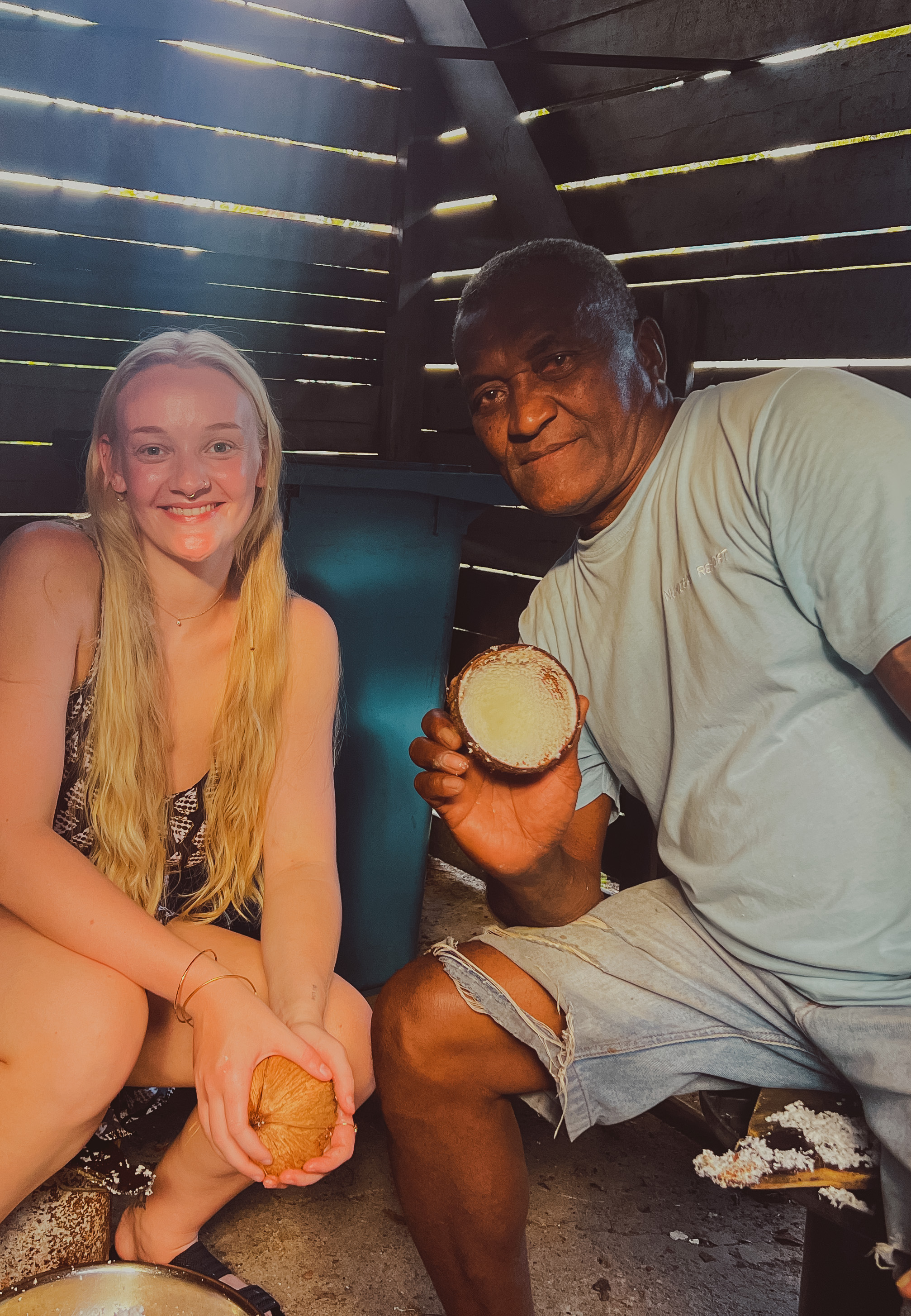
Anya Benavides
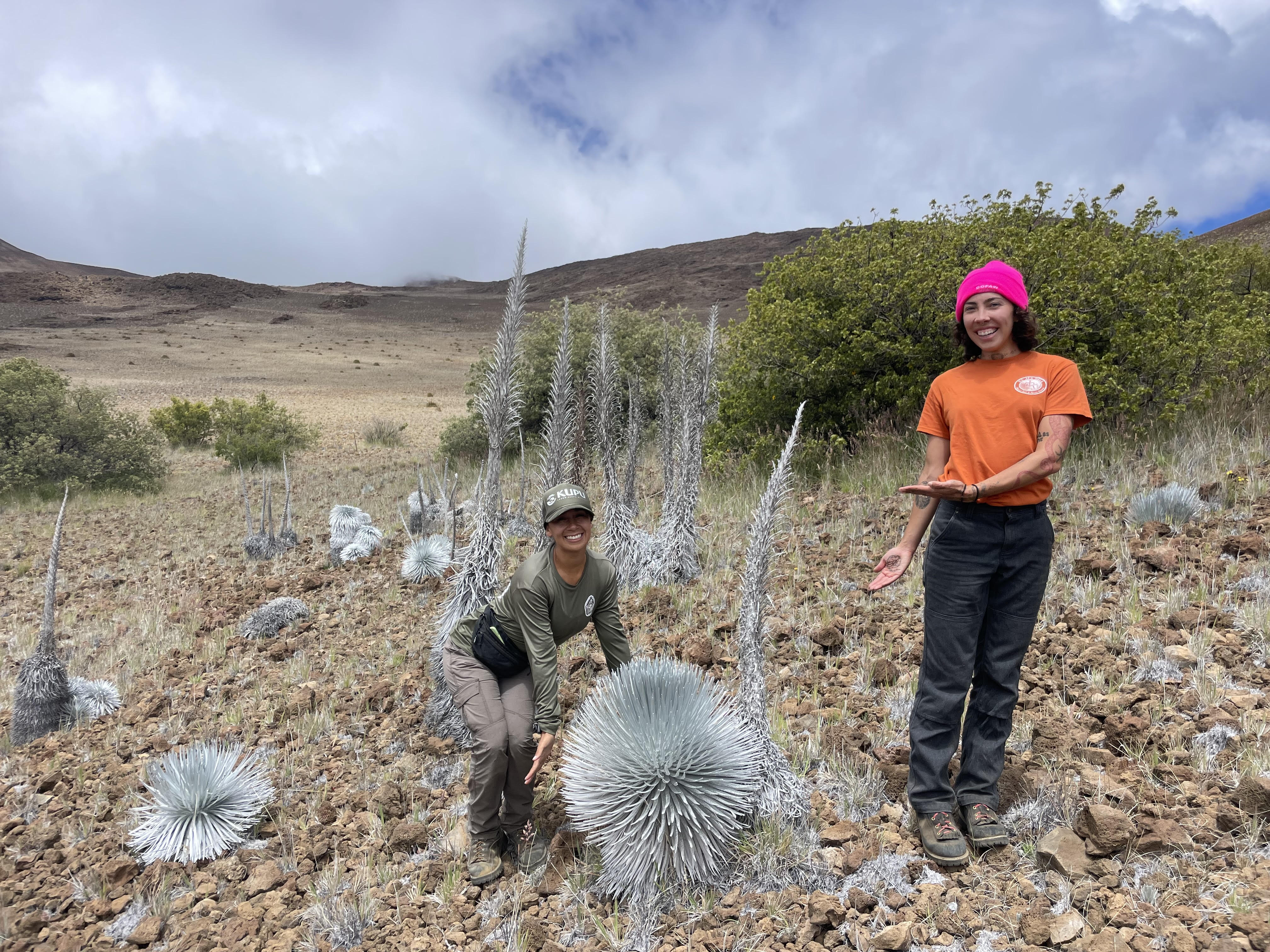 Anya is from Puna, Hawai‘i. Her internship is with the Natural Area Reserve System (NARS). She works across all of NARS's field crews with a diversity of ecosystems and plant and animal communities. Some of what she does involves surveys for the field crew, bird crew and PEPP, invasive species removal through predator trapping and weed control, fence construction and checks throughout the reserves, outplanting and native seed propagation nursery work, and data management. It also involves camping every other week for work. Her favorite part of the experience is being able to work in such special places with native plant and animal species. She never takes that for granted. The most challenging part is that the conditions can be strenuous, and take a lot physically. She is still adjusting to that kind of work.
Anya is from Puna, Hawai‘i. Her internship is with the Natural Area Reserve System (NARS). She works across all of NARS's field crews with a diversity of ecosystems and plant and animal communities. Some of what she does involves surveys for the field crew, bird crew and PEPP, invasive species removal through predator trapping and weed control, fence construction and checks throughout the reserves, outplanting and native seed propagation nursery work, and data management. It also involves camping every other week for work. Her favorite part of the experience is being able to work in such special places with native plant and animal species. She never takes that for granted. The most challenging part is that the conditions can be strenuous, and take a lot physically. She is still adjusting to that kind of work.
Kaʻehukai Goin
Ka‘ehukai is from Makakilo, Oʻahulua. For his internship, he is working with the Papahānaumokuākea Marine Debris Project (PMDP). For his internship as a lead marine debris technician, he is helping to train the new recruits in all goals of their organization. He is mainly leading Hawaiian protocol which entails teachings ʻoli (Hawaiian Chants), ʻŌlelo Noʻeau (Hawaiian Proverbs), and Huaʻolelo o ka lā (word of the day). These cultural practices are to help create a pilina (relationship) with his crew and Papahānaumokuākea strengthening their understanding for the importance of the work they are conducting. They are protecting sacred ancestral lands from a tyranny of man made trash. His favorite part of the internship is getting to meet people with different backgrounds and sharing similarities of ideas and culture. The most challenging part is leading a team; previously he has been the one conducting work and not overseeing everyone else’s work
Ioanna Gotschall
Ioanna is from Kiribati. Her internship is with Conservation International. For her internship, she will aid the development of a marine monitoring plan for five priority fisheries species that the community has identified. Documenting place-based knowledge of the lineal descendants of Hōnaunau will inform monitoring protocols developed for a Hōnaunau community base subsistence fisheries area (CBSFA). Community-based resource management is an effective means for biocultural restoration and addresses the lack of capacity from centralized government agencies. Her favorite part of her internship is talking story and building community with Hui Ohana o Hōnaunau and state agency officials, working together towards the same goal. The most challenging thing done has been synthesizing the literature collected for writing the proposal and the literature review for the five species assigned. She anticipates analyzing the interview data and composing a synthesis that the community approves of will also be a major challenge.
Leslie Lockhart
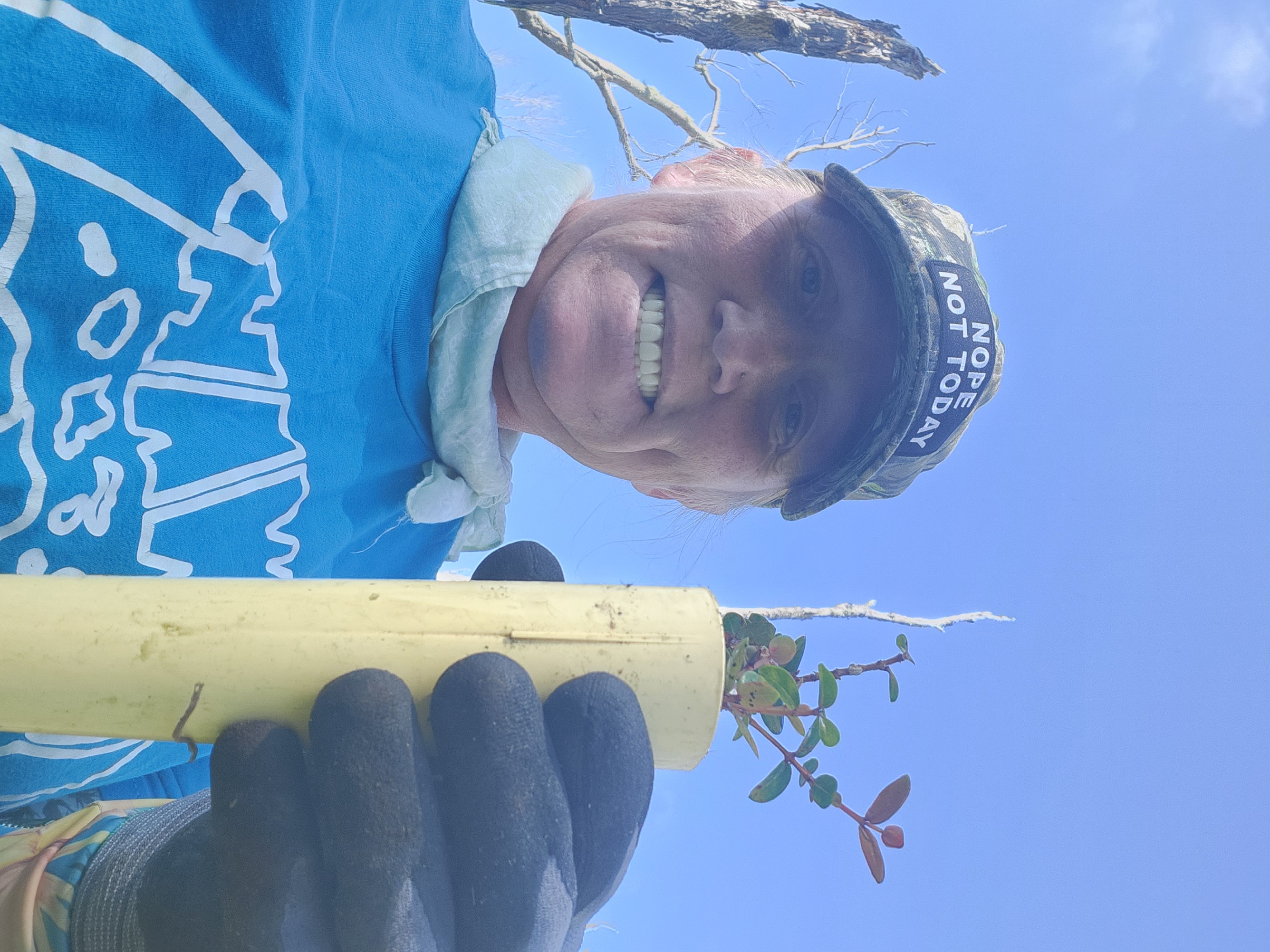 Leslie is from Mountain View, Hawai‘i. For her internship, she is working with Ho‘ola Farms. She is involved in designing a bee garden and researching the potential positive effect pollinator plants can have on climate change. She is also growing the chosen plants from seed in the onsite greenhouse while keeping marauding chickens away from the seedlings. While the plants are growing, she is using composting worms to begin soil regeneration. A fun fact she gave is that Earthworms are the third animal mentioned in the Kumulipo. Her favorite part of her internship is getting her hands in the soil and creating a self-sustaining, long-term home for pollinators. The most challenging part is discovering optimal routines and conditions for plant growth and worm reproduction.
Leslie is from Mountain View, Hawai‘i. For her internship, she is working with Ho‘ola Farms. She is involved in designing a bee garden and researching the potential positive effect pollinator plants can have on climate change. She is also growing the chosen plants from seed in the onsite greenhouse while keeping marauding chickens away from the seedlings. While the plants are growing, she is using composting worms to begin soil regeneration. A fun fact she gave is that Earthworms are the third animal mentioned in the Kumulipo. Her favorite part of her internship is getting her hands in the soil and creating a self-sustaining, long-term home for pollinators. The most challenging part is discovering optimal routines and conditions for plant growth and worm reproduction.
Alexandra Mahadeo
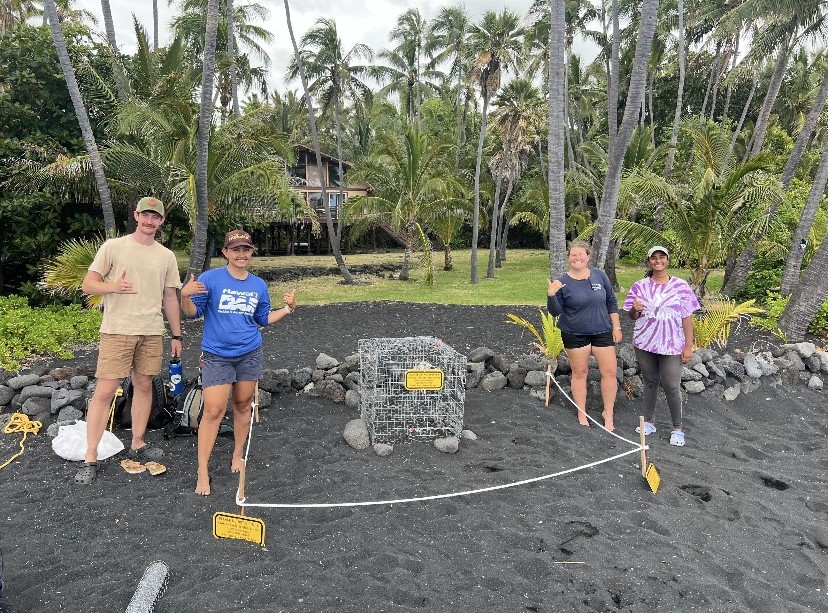 Ally is from Houston, Texas. Her internship is with the Hawai'i Island Hawksbill Project. Her field work involves night monitoring of nesting sites to monitor adult female Hawksbill sea turtles and determine the location of the nest. Protection of the nests includes predator control and nest cages with signs that inform the public. She is creating a nest distribution map that emphasizes the importance of protecting the nesting sites and how the coastal vegetation is utilized by the species. She is also assisting with their end of year report and planning for the hatchling season. A fun fact she gave is that Hawksbill Sea turtles lay around 180 eggs per clutch and return to nest in the site where they were born. They can lay 3-6 nests in one nesting season. Her favorite aspect of the internship is the hatchling season since they get to see the newborn Hawksbill sea turtles make their journey from the nest into the ocean. The most challenging part came during a day trip to one of their sites. They had to respond to an adult female Hawksbill sea turtle that had flipped onto her back and was suffocating. It was very difficult to see, but they were able to get her safely back to the ocean. Another challenging aspect is staying up all night 5 days a week for night monitoring.
Ally is from Houston, Texas. Her internship is with the Hawai'i Island Hawksbill Project. Her field work involves night monitoring of nesting sites to monitor adult female Hawksbill sea turtles and determine the location of the nest. Protection of the nests includes predator control and nest cages with signs that inform the public. She is creating a nest distribution map that emphasizes the importance of protecting the nesting sites and how the coastal vegetation is utilized by the species. She is also assisting with their end of year report and planning for the hatchling season. A fun fact she gave is that Hawksbill Sea turtles lay around 180 eggs per clutch and return to nest in the site where they were born. They can lay 3-6 nests in one nesting season. Her favorite aspect of the internship is the hatchling season since they get to see the newborn Hawksbill sea turtles make their journey from the nest into the ocean. The most challenging part came during a day trip to one of their sites. They had to respond to an adult female Hawksbill sea turtle that had flipped onto her back and was suffocating. It was very difficult to see, but they were able to get her safely back to the ocean. Another challenging aspect is staying up all night 5 days a week for night monitoring.
Hanna Michaud
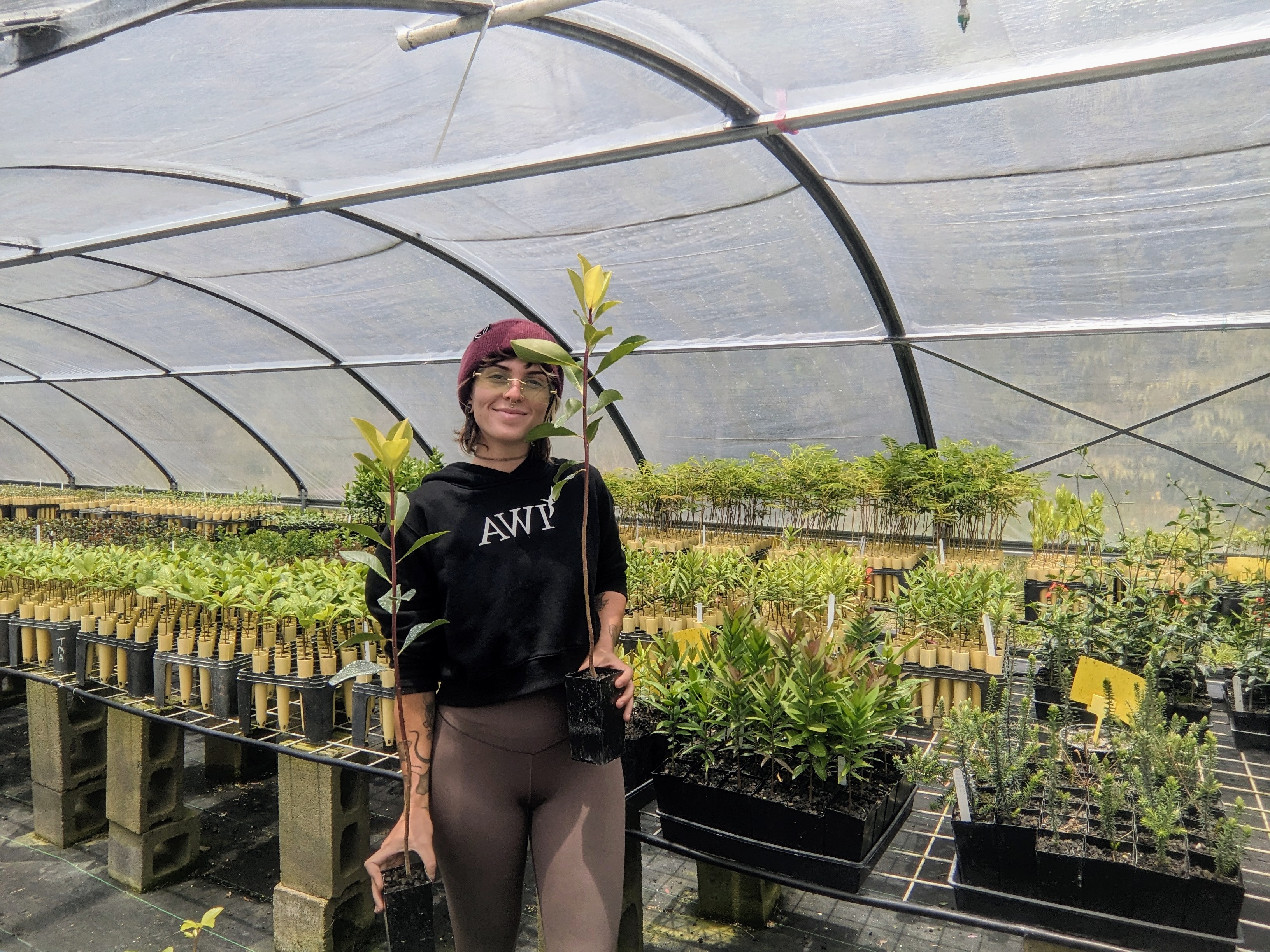 Hanna is from Hilo, Hawai‘i. Her internship is with the Three Mountain Alliance. She is working with the propagation crew in the native plant nursery and in the field, growing native seedlings and actively restoring native ecosystems. Along with collecting seeds, propagating plants from specific climate zones, and outplanting in restoration sites across the island, she is contributing to the detailed documentation of nursery plant propagation knowledge and procedures, for future island-wide collaboration. Her internship includes documenting and organizing nursery guides and growing timelines, as well as collecting and incorporating information on site specific plant reproductive phenology. Often when they go out to collect ʻŌlapa fruits, they will hear the endemic Hawaiian thrush who loves ʻŌlapa, the ʻŌmaʻo, calling from nearby. It feels like they're saying "those are my fruits!". Her favorite part of the internship is seeing the plants they've grown and outplanted thriving in the field, especially when the restoration site begins naturally regenerating. The most challenging part is that native plant seed production can vary drastically depending on elevation and climate, so it can be challenging to determine exactly where in a site is best to collect mature seeds at exactly what time of year.
Hanna is from Hilo, Hawai‘i. Her internship is with the Three Mountain Alliance. She is working with the propagation crew in the native plant nursery and in the field, growing native seedlings and actively restoring native ecosystems. Along with collecting seeds, propagating plants from specific climate zones, and outplanting in restoration sites across the island, she is contributing to the detailed documentation of nursery plant propagation knowledge and procedures, for future island-wide collaboration. Her internship includes documenting and organizing nursery guides and growing timelines, as well as collecting and incorporating information on site specific plant reproductive phenology. Often when they go out to collect ʻŌlapa fruits, they will hear the endemic Hawaiian thrush who loves ʻŌlapa, the ʻŌmaʻo, calling from nearby. It feels like they're saying "those are my fruits!". Her favorite part of the internship is seeing the plants they've grown and outplanted thriving in the field, especially when the restoration site begins naturally regenerating. The most challenging part is that native plant seed production can vary drastically depending on elevation and climate, so it can be challenging to determine exactly where in a site is best to collect mature seeds at exactly what time of year.
Hannah Rozendo
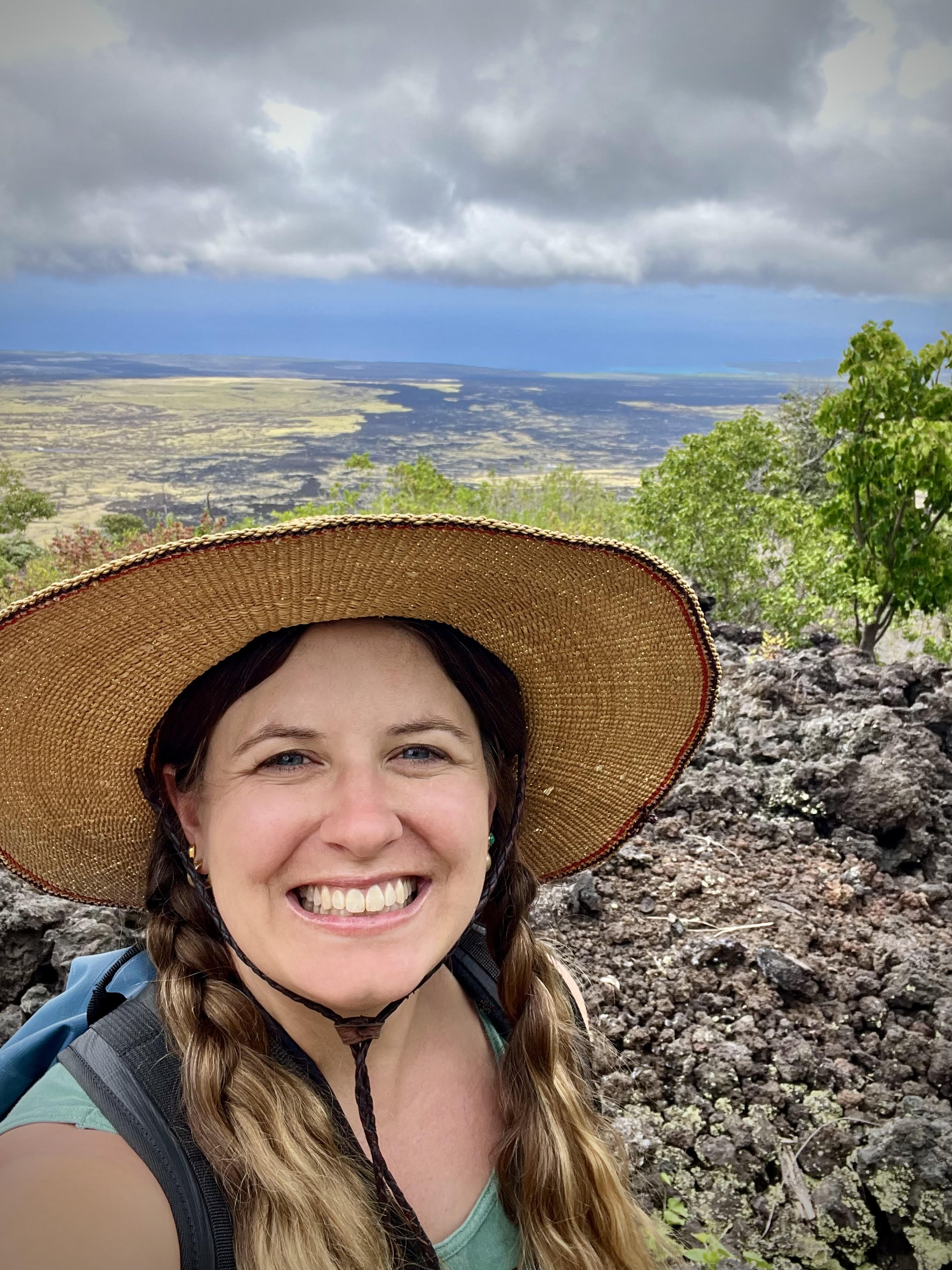 Hannah is from Santa Barbara, California. For her internship, she is working with Pōhaku Pelemaka. Her internship supports Pōhaku Pelemaka in creating an ʻOhana Stewardship and Management Plan for their lands. By conducting resource assessment surveys, coordinating work days with other interns and visiting groups, and researching historical place-based references, all of these parts will contribute to crafting the management plan. An interesting fact about her site is that the entire Puna district is a wahi pana (legendary place), with lands constantly facing destruction and rebirth from the lava flows. Her favorite aspect of her internship is learning from and working alongside the lineal descendants of the Puna coastline. These friends are generous to answer her questions and share moʻolelo (stories) with her. Each time they work together, she learns more about the relationships between land, sea, and people. The greatest challenge with this project is educating the greater community to join in protecting and taking care of the land. Community stewardship support (especially from youth!) ensures a healthy future of Puna coastline.
Hannah is from Santa Barbara, California. For her internship, she is working with Pōhaku Pelemaka. Her internship supports Pōhaku Pelemaka in creating an ʻOhana Stewardship and Management Plan for their lands. By conducting resource assessment surveys, coordinating work days with other interns and visiting groups, and researching historical place-based references, all of these parts will contribute to crafting the management plan. An interesting fact about her site is that the entire Puna district is a wahi pana (legendary place), with lands constantly facing destruction and rebirth from the lava flows. Her favorite aspect of her internship is learning from and working alongside the lineal descendants of the Puna coastline. These friends are generous to answer her questions and share moʻolelo (stories) with her. Each time they work together, she learns more about the relationships between land, sea, and people. The greatest challenge with this project is educating the greater community to join in protecting and taking care of the land. Community stewardship support (especially from youth!) ensures a healthy future of Puna coastline.
Benjamin Julian Smith
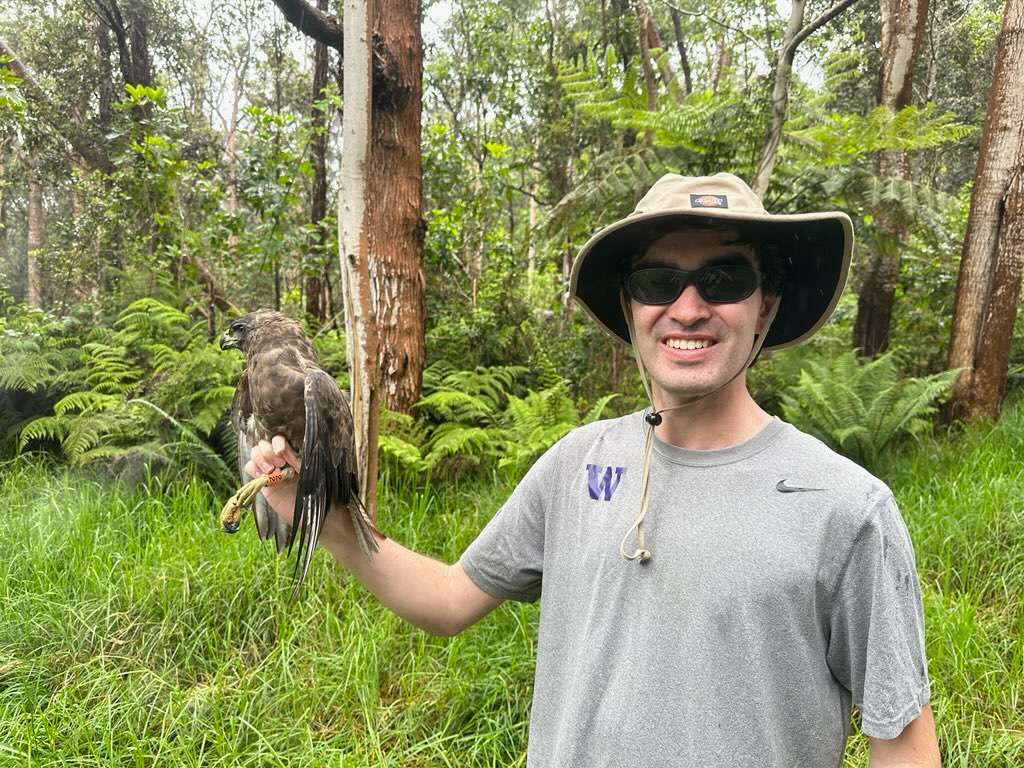 Benjamin is from Seattle, Washington. For his internship, he is working with the Department of Fish and Wildlife (DOFAW). His main focus is on finding the burrows of the 'ua'u and the 'ake'ake on Mauna Loa, working with sniffer dogs to find their elusive nests. In addition to this, he is helping with other bird projects for DOFAW, assisting with bird surveys, predator removal, and bird banding. He gets to work with some of the most endangered birds on the planet and help to protect their habitats. His favorite part of his internship is getting to explore new places around Hawai‘i that most people never get to see. The most challenging part is finding and confirming elusive burrows while traversing through various forms of lava flow.
Benjamin is from Seattle, Washington. For his internship, he is working with the Department of Fish and Wildlife (DOFAW). His main focus is on finding the burrows of the 'ua'u and the 'ake'ake on Mauna Loa, working with sniffer dogs to find their elusive nests. In addition to this, he is helping with other bird projects for DOFAW, assisting with bird surveys, predator removal, and bird banding. He gets to work with some of the most endangered birds on the planet and help to protect their habitats. His favorite part of his internship is getting to explore new places around Hawai‘i that most people never get to see. The most challenging part is finding and confirming elusive burrows while traversing through various forms of lava flow.
